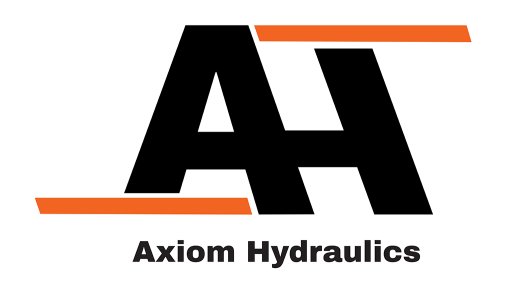Engel’s Curve and the pollution question
Pollution remains one of the challenging issues for many emerging economies. They want growth and development before worrying about dealing with the long-term externality problems. There are several sources of pollution: coal-fired power plants, vehicles, refineries, smelters and cheap, dirty fuels used by households, especially those that have limited or no access to electricity.
Heavy industrial activity goes with persistent long-term problems. Localised effects can be more pronounced than distant effects. Growth of national income is weighed against the pain that States are willing to allow their citizens to endure. But you cannot always count on endurance, even from loyal citizens who happen to share in the growing national income share. The growth in national income tends to push up the demand for cleaner air. This is what is happening in China at the moment.
China has a serious problem on its hands, given its high urban densities and proximity of the populace to polluting industries. Hundreds of thousands of people suffer from respiratory disorders and some are overcome with heavy pollution, leading to many unnatural deaths. During a trip to China two years ago, I attended a presentation by the National Bureau of Statistics, which conducts yearly surveys of its citizens.
The survey results showed that the third most important thing in terms of national priorities and concern is the environment, after health and education. Most Chinese see pollution as a health issue and the increased intensity of industrial pollutants becomes a long-term health issue in a country without a robust social welfare and health system. According to China’s next five-year plan, the country intends investing significant resources in cleaning its air, water and soil. China is already shutting down certain polluting industries. It is also turning air pollution mitigation into an investment opportunity.
The famous Simon Kuznet’s Curve predicts that, as national incomes rise, countries pursue more stringent environmental regimes. Things may not always happen in real life in the way theories predict. The environmental Kuznet’s Curve draws parallels with Kuznet’s general thesis that, as countries grow, market forces first increase inequality before they act to decrease it. Kuznet’s Curve predicts an inverted U-shaped curve. The theory has had mixed results, proving to be true for some pollutants but less so for others. For instance, for carbon emissions, it has not proved itself very well, as it requires major shifts from fossil fuels to cleaner fuels in the energy system.
Some economists even suggest we have what they call an N Curve, where income rises and pollution abates for a while, but the rise in income pushes pollution back up again. This has certainly been true for carbon emissions. Kuznet’s theory is also weak in predicting the effects of countries moving polluting industries to other countries where rules are less stringent and there are lower cost barriers for entry. Stringent rules in a domestic economy merely incentivise companies to take their polluting industries elsewhere.
Economists prefer the use of what is called Engel’s Curve in explaining environmental mitigation as a result of incomes rising. It is named after German economist Ernst Engel, who showed that the share of income of a household is a better predictor of the patterns of its consumption of different goods and services and the quality of the goods and services they are able to buy. Engel wanted to understand the relationship between income and household expenditure on food in poorer households.
Why is Engel’s Curve useful? It shows that, as national incomes rise, they can change the profile of polluting industry in three ways: scaling, technique and composition. The first is a relationship between income rise and the growth of an economy and you can also tell what could happen to pollution if all things stay the same; the second is the relationship of income rise and changes in production methods; and the third the kind of shifts that may occur in the nature of the economy as economies with rising incomes may also shift to less-polluting sectors.
Rising incomes tend to push up the quality of education and so the skills base of the human capital. As the quality of skills improves with a rise in income, so does the cost of labour. This can do one of two things, or both: it allows more knowledge-intensive industries to take over a share of gross domestic product and national income from heavy industries or heavy industries move to other countries where labour and energy are cheaper. Or, simply, both heavy and knowledge industries grow, but rising incomes allow once-polluting energy sources and industries to adopt cleaner technologies or energy sources.
Household expenditure tells a story too. Poorer households will be saddled with goods that have either more embedded pollution or increase the level of household pollution as they cannot buy more expensive cleaner sources of energy, while richer households, over time, shift the weight of embedded pollution to goods and services that have an overall weighting that is less.
Increased household income can also have the perverse effect: it can drive up the demand for goods and services and so stimulate economic growth and, in turn, the level of pollution grows. But again, this all depends on how scaling of demand is offset by technique, the adoption of new technology and the general compositional shift in the economy and the degree to which goods are imported. The relation between income rise and improved environmental standards is more complicated than straightforward.
Article Enquiry
Email Article
Save Article
Feedback
To advertise email advertising@creamermedia.co.za or click here
Comments
Press Office
Announcements
What's On
Subscribe to improve your user experience...
Option 1 (equivalent of R125 a month):
Receive a weekly copy of Creamer Media's Engineering News & Mining Weekly magazine
(print copy for those in South Africa and e-magazine for those outside of South Africa)
Receive daily email newsletters
Access to full search results
Access archive of magazine back copies
Access to Projects in Progress
Access to ONE Research Report of your choice in PDF format
Option 2 (equivalent of R375 a month):
All benefits from Option 1
PLUS
Access to Creamer Media's Research Channel Africa for ALL Research Reports, in PDF format, on various industrial and mining sectors
including Electricity; Water; Energy Transition; Hydrogen; Roads, Rail and Ports; Coal; Gold; Platinum; Battery Metals; etc.
Already a subscriber?
Forgotten your password?
Receive weekly copy of Creamer Media's Engineering News & Mining Weekly magazine (print copy for those in South Africa and e-magazine for those outside of South Africa)
➕
Recieve daily email newsletters
➕
Access to full search results
➕
Access archive of magazine back copies
➕
Access to Projects in Progress
➕
Access to ONE Research Report of your choice in PDF format
RESEARCH CHANNEL AFRICA
R4500 (equivalent of R375 a month)
SUBSCRIBEAll benefits from Option 1
➕
Access to Creamer Media's Research Channel Africa for ALL Research Reports on various industrial and mining sectors, in PDF format, including on:
Electricity
➕
Water
➕
Energy Transition
➕
Hydrogen
➕
Roads, Rail and Ports
➕
Coal
➕
Gold
➕
Platinum
➕
Battery Metals
➕
etc.
Receive all benefits from Option 1 or Option 2 delivered to numerous people at your company
➕
Multiple User names and Passwords for simultaneous log-ins
➕
Intranet integration access to all in your organisation

















